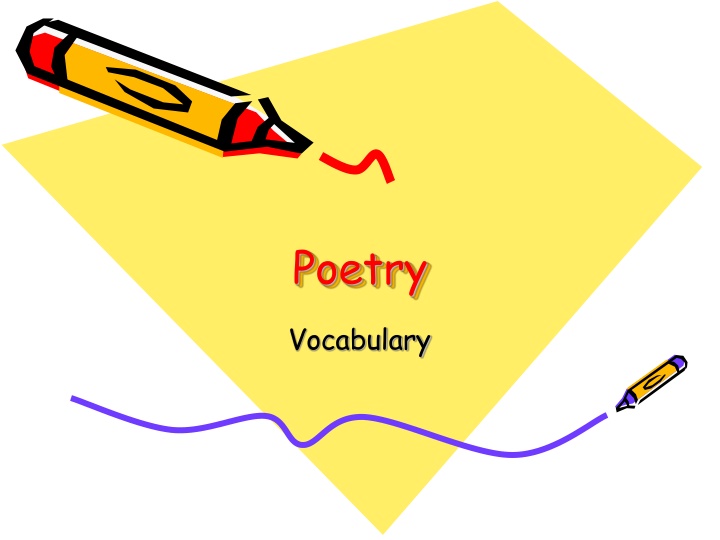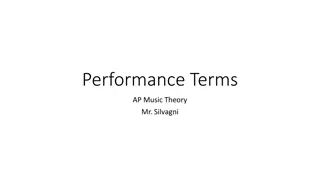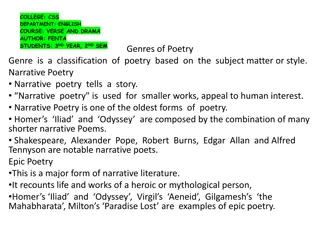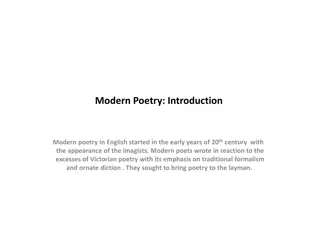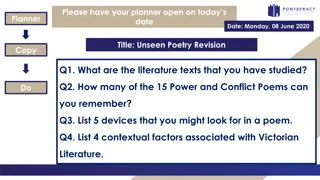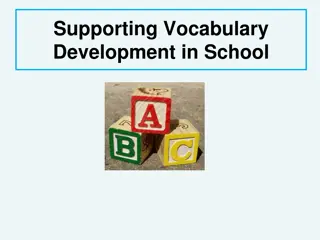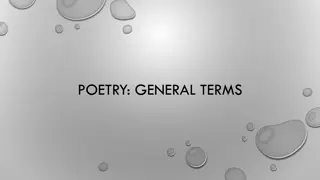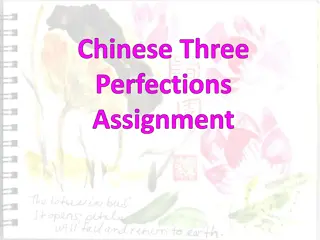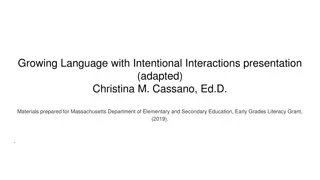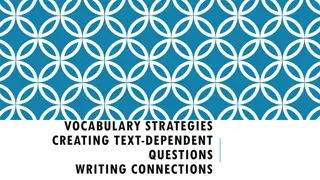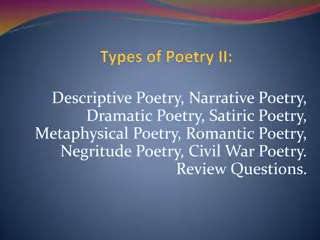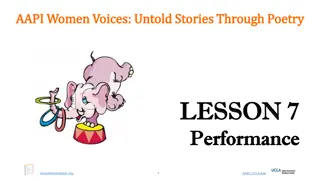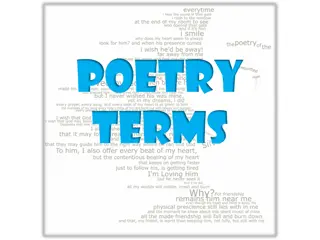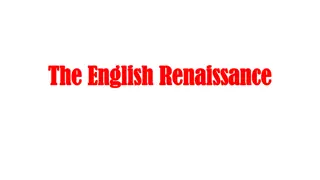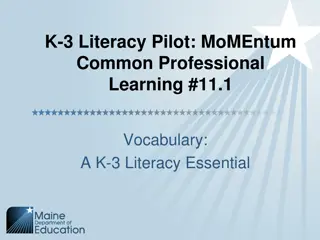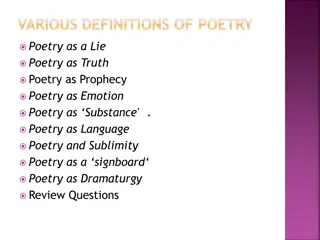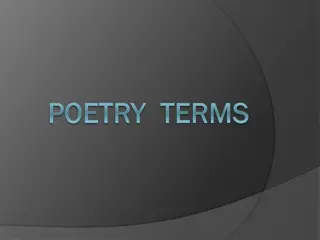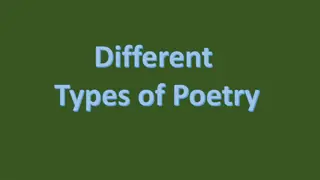Poetry Vocabulary Explained: A Guide to Key Terms in Poetry
Explore the world of poetry with this comprehensive guide on key terms such as alliteration, allusion, ballad, metaphor, and more. Written definitions and examples provide a clear understanding of each concept, making it easier to appreciate and analyze poetic works.
Download Presentation

Please find below an Image/Link to download the presentation.
The content on the website is provided AS IS for your information and personal use only. It may not be sold, licensed, or shared on other websites without obtaining consent from the author.If you encounter any issues during the download, it is possible that the publisher has removed the file from their server.
You are allowed to download the files provided on this website for personal or commercial use, subject to the condition that they are used lawfully. All files are the property of their respective owners.
The content on the website is provided AS IS for your information and personal use only. It may not be sold, licensed, or shared on other websites without obtaining consent from the author.
E N D
Presentation Transcript
Poetry Vocabulary
1. Alliteration: Repetition of initial consonant sounds Example: Sister Suzy sat on the seashore until suddenly she was swallowed by a shark. 2. Allusion: A reference to a well-known person, place, event, literary work, or work of art
3. Ballad: A song-like poem that tells a story 4.Blank Verse: Poetry written in unrhymed, iambic pentameter. 5.Concrete Poem: A poem with a shape that suggests its subject Example: George Herbert s Easter Wings and The Alter
6. Figurative Language: Writing that is not meant to be taken literally Example: He made me so mad I wanted to die. 7. Free Verse: Poetry not written in a regular rhythmical pattern or meter
8. Image: A word or phrase that appeals to one or more of the five senses 9. Lyric Poem: Highly musical verse that expresses the observations and feelings of a single speaker 10.Metaphor: A figure of speech in which something is described as though it were something else Example: He is such a pig when he eats!
11. Mood: The feeling created in the reader by a literary work 12. Onomatopoeia: The use of words that imitate sounds Example: The buzz of the bee was very loud. 13.Personification: A type of figurative language in which a non-human subject is given human characteristics Example: The tree waved excitedly in the wind.
14. Repetition: The use, more than once, of any element of language 15. Rhyme: Repetition of sounds at the end of words Example: Roses are red, violets are blue .. 16. Rhyme Scheme: A regular pattern of rhyming words in a poem
17. Rhythm: Pattern of beats or stresses in spoken or written language 18. Simile: A figure of speech that uses like or as to make a direct comparison between two unlike ideas My love is like a red rose. 19. Stanza: A formal division of lines in a poem considered as a unit
20. Motif Main or reoccurring theme. 21. Extended Metaphor a comparison developed over several lines of poetry. 22. Pun Double
23. Confessional poetry confession of an activity or an emotion. 24. Elegy Pays tribute to a person (usually dead) 25. Imagist poetry uses lots of images to paint a picture for the reader.
Humor Humor in poetry can arise from a number of sources: Surprise Exaggeration Bringing together of unrelated things Most funny poems have two things in common: Rhythm Rhyme
Rhythm & Rhyme Using more spirited language makes humorous situations even more humorous The Porcupine By Ogden Nash Any hound a porcupine nudges Can t be blamed for harboring grudges. I know one hound that laughed all winter At a porcupine that sat on a splinter.
If you take away the rhythm and rhyme, the humor vanishes. Any hound that touches a porcupine Can t be blamed for holding a grudge I know one hound that laughed all winter long At a porcupine that sat on a piece of wood
Limericks A limerick is a poem of five lines The first, second, and fifth lines have three rhythmic beats and rhyme with one another. The third and fourth lines have two beats and rhyme with one another. They are always light-hearted, humorous poems.
Limericks There once was a man with no hair. He gave everyone quite a scare. He got some Rogaine, Grew out a mane, And now he resembles a bear!
Limerick About a Bee I wish that my room had a floor, I don t care so much for a door. But this walking around Without touching the ground Is getting to be quite a bore.
Another Limerick There once was a very small mouse Who lived in a very small house, The ocean s spray Washed it away, All that was left was her blouse!
You will create a limerick similar to this one There once was a man from Beijing. All his life he hoped to be King. So he put on a crown, Which quickly fell down. That small silly man from Beijing.
Fill in the blanks and create your own Limerick. There once was a _____ from _____. All the while she/he hoped ________. So she/he ____________________, And ________________________, That _________ from ___________.
The class Limerick: There once was a _____ from _____. All the while she/he hoped ________. So she/he ____________________, And ________________________, That _________ from ___________.
This powerpoint was kindly donated to www.worldofteaching.com http://www.worldofteaching.com is home to over a thousand powerpoints submitted by teachers. This is a completely free site and requires no registration. Please visit and I hope it will help in your teaching.
